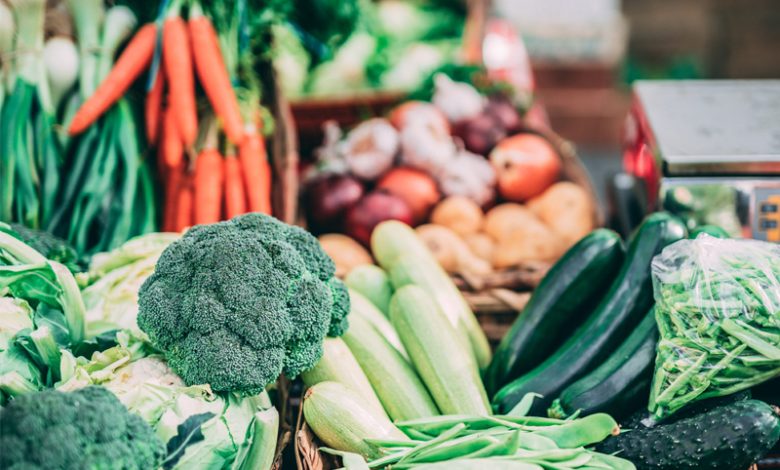7 man made vegetables and fruits you may not know

Most of us don’t have any idea about the popular fruits and vegetables that we eat today are hybrids. They are making in laboratories through selective breeding, a process where plants with selective traits are replanted. In some cases insects also created hybrid plants through cross pollination. If you are curious about what man made fruits and vegetables you are eating, we will provide you with our list of 7 man made fruits and vegetables that you might not know about.
1) Almond
The creation of almonds is a great mystery of science. As per genetic tracing, it is man made descendent of the Amygdalus fenzliana Lipsky. The mystery is how people developed it. The seed of the parent plant is bitter in taste but is highly toxic.
2) Cabbage, Broccoli, Cauliflower and Kale and more
Cabbage, Broccoli, Cauliflower, Kale, brussels, Kohlrabi and many other related vegetables originated from Brassica Olaracea. The original form of this plant species is known as wild mustard and it still exists.
Nearly 2500 years ago, wild mustard used to grow in the Mediterranean and some parts of Europe. The taste of it used to vary depending on the place where it grew. Ancient Romans and Greeks felt that they could plant it for food, so they started selective breeding by planting seeds from wild mustard having larger leaves. The result was vegetables like Kale and Collard greens that we eat today.
After this selective breeding continued even in the 1600’s where people started breeding wild mustard with bigger leaf buds. The result of this was the first cabbage,vegetables covered with lots of leaves. Wild mustard chosen for its bigger stems became Kohlrabi and the ones having smaller heads became brussels sprouts, and the ones having bigger flowers became cauliflower and broccoli.
3) Orange
Orange is one of the most popular among man made fruits and vegetables. Many varieties of orange exist presently but all of them point its roots to the hybrid when mandarin was crossed with pomelo. Mandarin is sweet in taste but pomelo is bitter in taste just like the grape fruit.
It is orange in colour and that is why most people misidentify it as a variety of orange, but this is not true. Mandarin is mainly an ancestor of oranges. Though the history of orange is not that much clear but most probably first appeared in southern china. Over these years humans have bred oranges selectively for creating many varieties of it, thus making it easy for people to confuse orange with many other citrus fruits. But a fruit needs to have evolved from the breeding of pomelo and mandarin to consider as orange or as any of its varieties. As per research, tangerine is not a variety of orange as it evolved from the mandarin but not from pomelo.
4) Carrots
Many people have doubts in their minds whether carrots are natural or man made and for knowing this we need to study the history of carrots. As per first known records they first appeared in persia during the 10th century. These carrots had smaller roots and they were purple or white in colour. The persians continued the selective breeding until they developed a plant with sizable single root. Carrots also mutated from white or purple to yellow and finally orange as the selective breeding continued and it continued till modern times for improving their flavour and colour.
5) Strawberry
The modern strawberry fruit that we eat today is hybrid of the smaller wild strawberry which has better flavour and aroma and a shorter shelf life. As per resources, the modern strawberry first appeared in the 18th century in France. But the hybridization program started much earlier as per resources.
French botanists started planting wild strawberries in the 1300s when they realized the fact that wild strawberries reproduce by cloning. Some strawberries strangely never produced fruits and many of them stopped cloning and developing fruits after some years.
The French people finally managed to develop wild strawberries that were 15 to 20 times bigger than their normal size, but still incredibly small. The modern strawberry was created by Antoine Nicholas Duchesne on July 6 in the year 1764, after crossing a male Fragaria moschata with female Fragaria Chiloensis.
French botanists never realized that strawberries had male and female parts before Duchesne created this modern strawberry. That is the reason why they were never able to produce the perfect modern strawberry.
6) Peanut
Peanut is one of the most popular ones among man made fruits and vegetables. The modern peanut that we eat today is a hybrid of two earlier types of peanuts Arachis ipaensis and Arachis duranensis. The Arachis ipaensis grows in Bolivia and Archis Duranensis grows in the Andean valleys between Argentina and Bolivia.
Both these plants were found far away from each other so there are less chances that they have crossed naturally. As per research the earliest settlers in South America took with them the Arachis Duranensis plants from the Andean valleys as they moved into modern Bolivia 10,000 years ago.
However, the settlers did not understand the potential of their new crop and the bees cross pollinated both the peanuts. The result was a peanut which is the ancestor of modern peanuts.
7) Banana
The bananas that we purchased from the grocery store today are the result of crossing between Wild Musa Accuminata and Musa Balbisiana banana plants. The Acuminata has creamy flesh with few seeds and a medicinal flavour and the Balbisiana was fleshy with hard spots and sweet and fruity in flavour. When brought together they created the perfect banana that we eat today.
Conclusion
After reading about all these man made fruits and vegetables we observe that we humans have been altering vegetables, fruits and nuts for thousands of years. In some cases people developed these hybrids to taste better.





